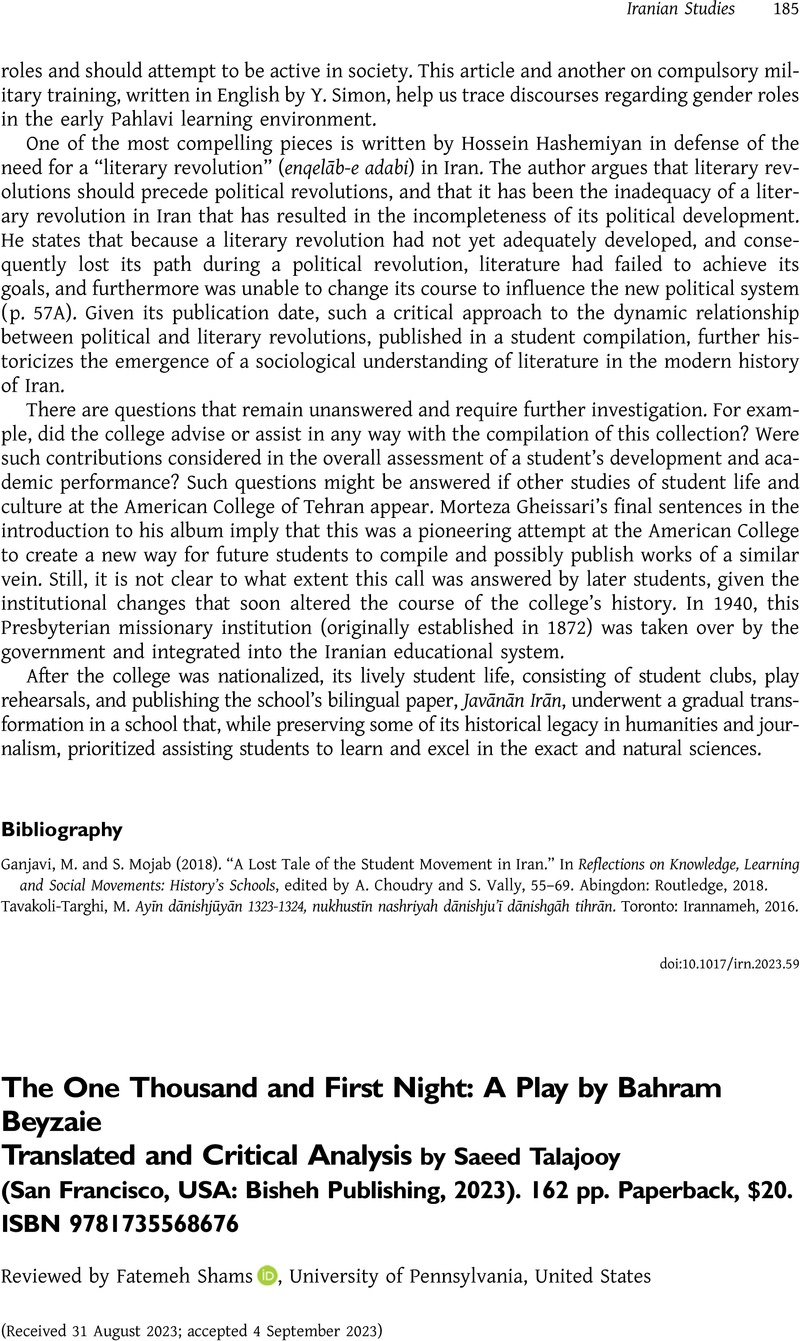No CrossRef data available.
Article contents
The One Thousand and First Night: A Play by Bahram Beyzaie Translated and Critical Analysis by Saeed Talajooy (San Francisco, USA: Bisheh Publishing, 2023). 162 pp. Paperback, $20. ISBN 9781735568676
Review products
Published online by Cambridge University Press: 02 October 2023
Abstract

- Type
- Review
- Information
- Copyright
- Copyright © The Author(s), 2023. Published by Cambridge University Press on behalf of the Association for Iranian Studies
References
1 Talajooy, Saeed, “Indigenous Performing Traditions,” Iranian Studies 44, no. 4 (2011): 498CrossRefGoogle Scholar.
2 Beyzaie interview with Ayyâr-e Tanha documentary, https://www.youtube.com/watch?v=QXSUxdiptM8 .
3 Talajooy, Saeed, “Reformulation of Shahnameh Legends in Bahram Beyzaie's Plays,” Iranian Studies 46, no. 3 (2013): 698CrossRefGoogle Scholar.
4 Beyzaie interview with Ayyâr-e Tanhâ documentary.



